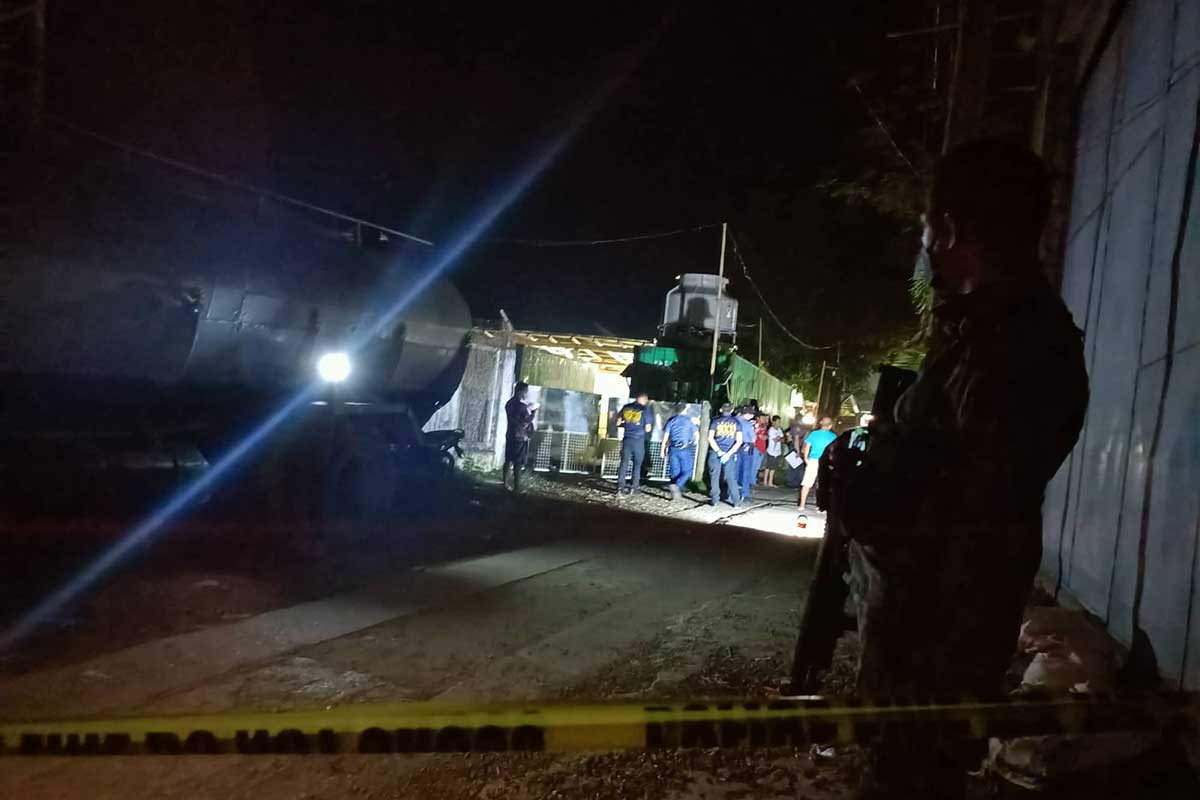
By Jennifer P. Rendon
The sensational incident in Estancia, Iloilo last Sept 14, 2022 that snuffed the lives of three young businessmen may have happened in at least two areas apart from the scene where the bodies were found.
Crime scene probers resorted to Luminol testing in two locations at the house of lone survivor Jevron Parohinog and the car where the fatalities were abandoned. The test was conducted evening of Sept 28.
“They have already observations but they have not officially submitted a report,” Senior Master Sergeant Francisco Lindero, Jr., spokesperson of the Special Investigation Task Group (SITG) PALIBOSFER, said Thursday.
A luminol test is conducted to determine the presence of blood at a crime scene. Wherever the chemical luminol touches blood, it glows, and the glow is bright enough to be photographed.
Members of the Regional Forensic Unit (RFU)-6 conducted the test on Parohinog’s house and the family-owned ice plant at Barangay Calumpang which is just around 50 meters away from his house.
Another test was also conducted on the Isuzu Mu-X sports utility vehicle (SUV) where the bodies of Mark Clarenz Libao, Jan Paul Mark Bosque, and Chrysler Floyd Fernandes were found.
Lindero said that it might take two to three days before the RFU-6 would release its findings to the SITG.
Forensic experts used Luminol, a chemical that exhibits chemiluminescence with a blue glow when mixed with an appropriate oxidizing agent to detect trace amounts of blood at crime scenes as it reacts with the iron in hemoglobin.
Online reports said that when luminol is sprayed evenly across an area, trace amounts of an activating oxidant make the luminol emit a blue glow that can be seen in a darkened room.
The glow only lasts about 30 seconds but can be documented photographically. The glow is stronger in areas receiving more spray; the intensity of the glow does not indicate the amount of blood or other activator present.
Lindero explained that the result of the luminol test is important to determine if there is another crime scene aside from the vehicle where the victims were allegedly shot dead.
The test became imperative after the SITG received reports that the vehicle stopped by Parohinog’s house and ice plant.
CCTV footage also showed that the vehicle was seen on the Parohinogs’ property before the victims were reportedly shot.
PHONE DATA
Meanwhile, Lindero said they already have the results of the data taken from the vehicle’s dashcam and the content of the victims’ mobile phones.
“But we couldn’t reveal the result for now,” he said.
Lindero said these scientific tests will help in either validating or debunking claims made by Parohinog.
Relatedly, Lindero said that the SITG did not receive any waiver from Parohinog’s camp to allow experts to open and examine his mobile phone.
“Our investigators were drafting our application for a cyber warrant,” he said.
On Tuesday, SITFG PALIBOSFER said that it will resort to the application of a cyber warrant should Parohinog decline to issue a waiver or consent to subject his mobile phone to a forensic examination.
Consent or cyber warrant is a prerequisite for the Regional Anti-Cybercrime Unit (RACU)-6 to take cognizance of the mobile phone for the purpose of extraction of information in aid of the investigation.
Parohinog’s mobile phone is still in the custody of the investigator-on-case.
The other phones recovered at the crime scene were already processed by RACU-6, and the reports concerning the result are already with the SITG.


















